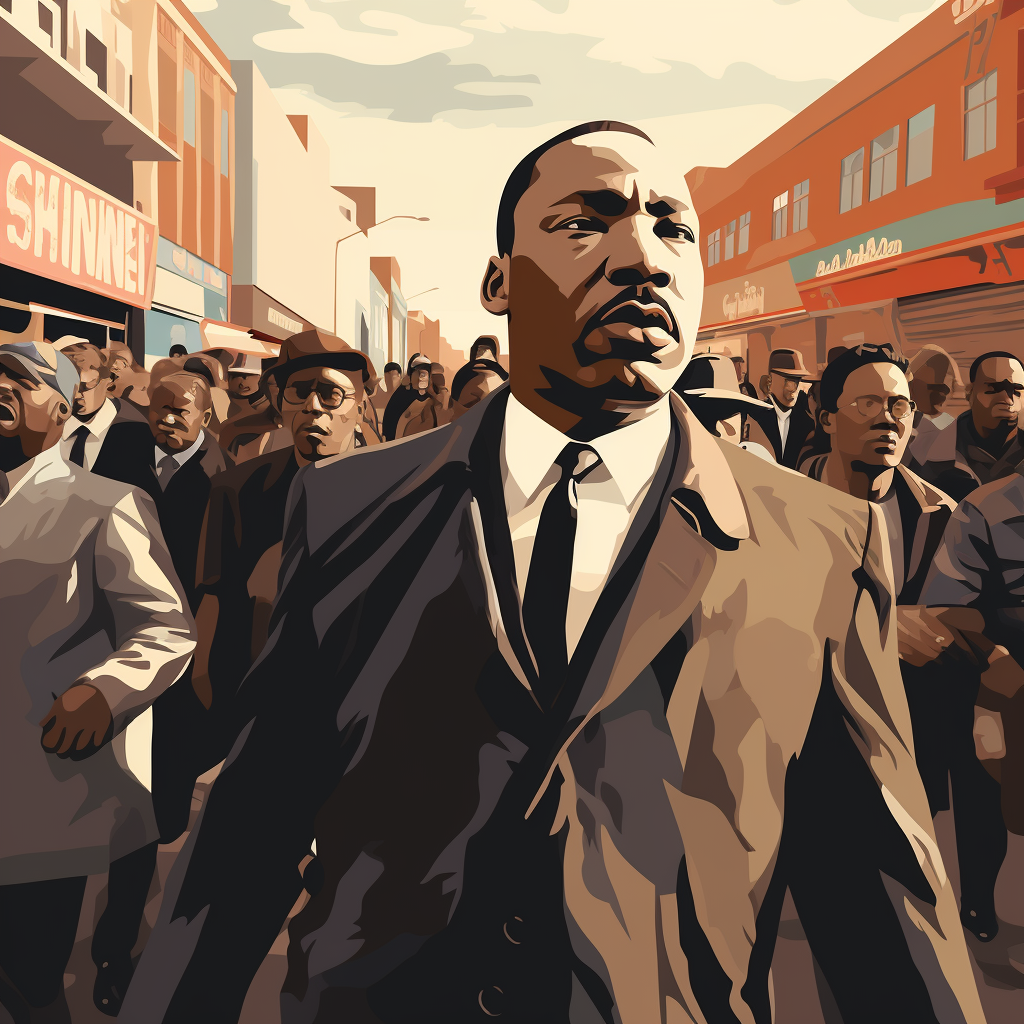Martin Luther King Jr and The Birmingham Campaign

The Birmingham Campaign of 1963, led by Martin Luther King Jr., is a paramount example of strategic nonviolent resistance used to combat racial segregation and injustice.
This campaign in Birmingham, Alabama, a city notoriously resistant to integration, showcased King's astute leadership and his commitment to nonviolent tactics as a means to achieve civil rights objectives.
Factual Details of King’s Leadership in the Birmingham Campaign
Time Period: Spring 1963
Location: Birmingham, Alabama, USA
Event: Birmingham Campaign
The Birmingham Campaign was a series of nonviolent protests against racial segregation in one of the most racially divided cities in the United States at the time. Organized by King and other civil rights leaders, the campaign utilized a variety of tactics, including sit-ins, marches, and boycotts.
The peaceful protests were often met with violent responses from local authorities, which were widely broadcast, bringing national attention to the civil rights movement. King's leadership and commitment to nonviolence were instrumental in gaining sympathy and support for the movement.
Key Outcomes:
- Increased national awareness of the severity of segregation and racial injustice in the South.
- The campaign led to the desegregation of public facilities in Birmingham.
Leadership Lessons from MLK’s Birmingham Campaign
Effective Use of Nonviolent Protest:
- King’s strategic use of nonviolent tactics in Birmingham highlighted the power of peaceful protest to effect social change and draw attention to injustice.
Navigating Opposition with Dignity:
- Despite facing violent opposition, King and his followers maintained their dignity and commitment to nonviolence, demonstrating the strength of character in leadership.
Mobilizing Community Support:
- The campaign’s success was partly due to King’s ability to mobilize and unite different segments of the community in a common cause.
Media as a Strategic Tool:
- King understood the power of media in swaying public opinion and strategically used the coverage of the violent responses to the protests to garner national support for the civil rights movement.
Resilience in the Face of Adversity:
- King’s leadership during the campaign was marked by resilience and perseverance, essential qualities in overcoming obstacles and achieving objectives.
How Today's Leaders Can Use This Lesson
- Employ nonviolent methods as effective tools for raising awareness and advocating for change in social and political issues.
- Maintain integrity and dignity when facing opposition or challenges, demonstrating the strength of your commitment and principles.
- Actively work to mobilize and unite diverse groups around a common goal, recognizing the power of collective action.
- Utilize media and public platforms strategically to amplify your message and influence public opinion.
- Embrace resilience and perseverance as key qualities in driving social movements and overcoming obstacles.
Concluding Thoughts
The Birmingham Campaign under Martin Luther King Jr.'s leadership remains a pivotal example of how nonviolent resistance, coupled with strategic planning and resilient leadership, can effectively challenge and dismantle systems of injustice.
The lessons from this campaign continue to inspire and guide leaders in various spheres of social and political activism.
Your Reflection
- Reflect on how you can incorporate nonviolent strategies and principles in your leadership, especially in challenging situations.
- Consider ways to effectively mobilize and unite community support for causes you are passionate about.
- Think about how you can use media and communication strategically to advance your objectives and make a broader impact.



